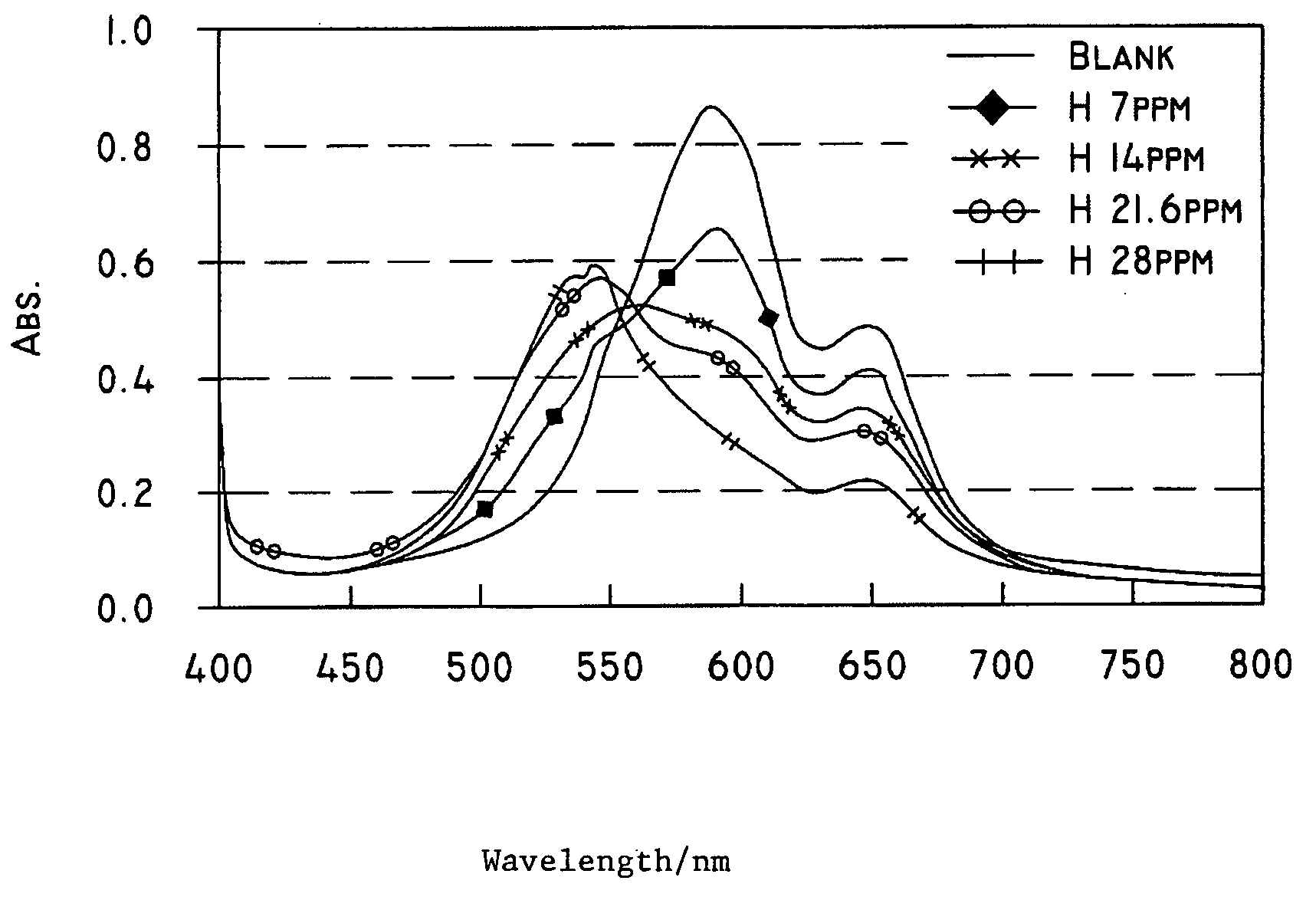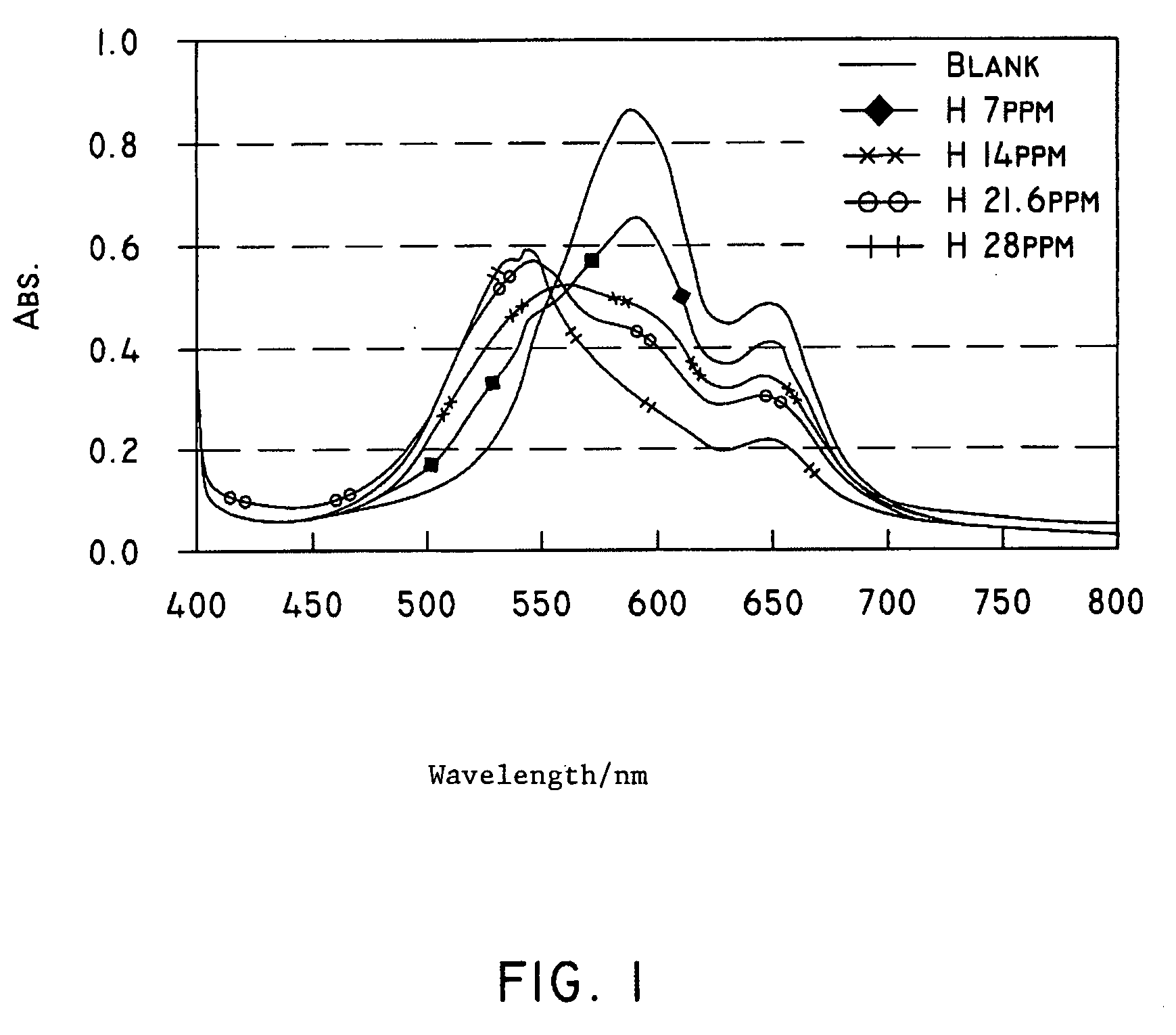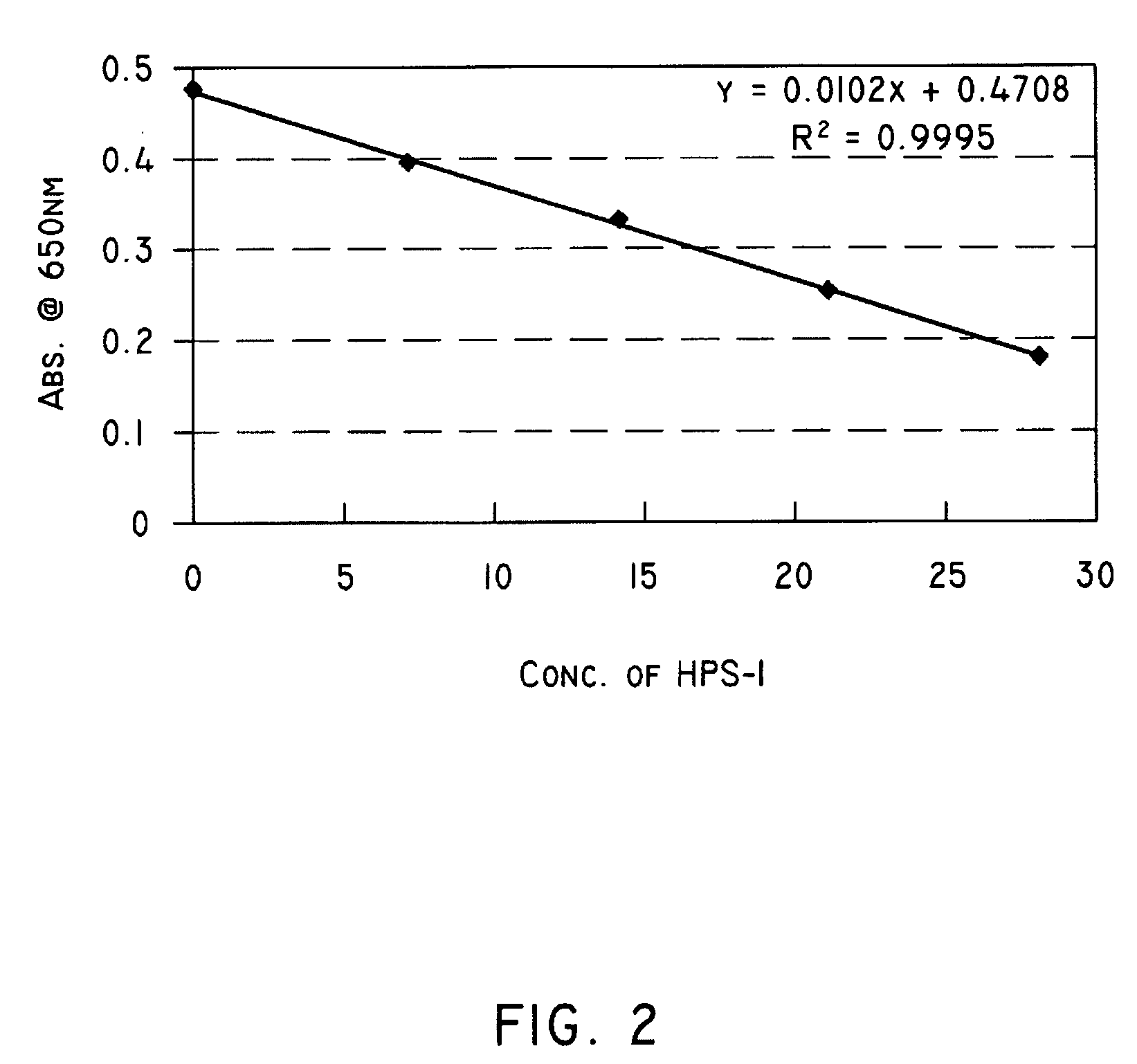Method for the determination of aqueous polymer concentration in water systems
a technology of water system and aqueous polymer, applied in the direction of instruments, ion-exchangers, analysis using chemical indicators, etc., can solve the problems of system equipment corrosion, heat transfer, fluid flow, etc., and achieve the effect of improving the efficiency of the system and reducing the cost of operation
- Summary
- Abstract
- Description
- Claims
- Application Information
AI Technical Summary
Problems solved by technology
Method used
Image
Examples
example 1
[0037]A polymer matrix comprising 10 g of PEO (Mw=200,000) in water (14.3%), 2.4 g of PEG (Mw=2,000) in water (60%), 0.25 g Tween 20, 0.125 g antifoam Sag 638 SFG and 50 mg DMMB were mixed and stirred at room temperature until the entire solid was dissolved. The film was prepared by screen-printing and dried at 70° C. for 10 minutes. The film was tested using a HPS-I standard solution. The spectra were read using a microplate reader at 575 nm and 525 nm and the delta absorbance of 575 nm minus the 525 nm was plotted as a function of HPS-I concentration. FIG. 3 illustrates the calibration curve obtained.
example 2
[0038]10 g of 33.3% PAA (Mw=5,000) in mixture of H2O and ethylene glycol (1:1), 0.086 g Tween 20 and 20 mg DMMB were mixed and stirred at room temperature until the entire solid was dissolved. The film was prepared by screen-printing and dried at 70° C. for 10 minutes. The film was tested using a HPS-I standard solution. The spectra were read by tricolor (Red, Green, Blue) LED and the delta absorbance of Red minus Green was plotted as a function of HPS-I concentration. FIG. 4 illustrates the calibration curve obtained.
example 3
[0039]2.4 g (13.4%) Cellulose acetate in di(ethlyene glycol)methyl ether, 7.6 g cellulose acetate in poly(ethylene glycol)dimethyl ether, 15 mg CTAB, and 120 mg DMMB were mixed and stirred at room temperature until the entire solid was dissolved. The film was prepared by screen-printing and dried at 70° C. for 10 minutes. The film was tested using a HPS-I standard solution. The spectra were read with a microplate reader at 575 nm and plotted as a function of HPS-I concentration. FIG. 5 illustrates the calibration curve obtained.
PUM
| Property | Measurement | Unit |
|---|---|---|
| Percent by mass | aaaaa | aaaaa |
| Thickness | aaaaa | aaaaa |
| Percent by mass | aaaaa | aaaaa |
Abstract
Description
Claims
Application Information
 Login to View More
Login to View More - R&D
- Intellectual Property
- Life Sciences
- Materials
- Tech Scout
- Unparalleled Data Quality
- Higher Quality Content
- 60% Fewer Hallucinations
Browse by: Latest US Patents, China's latest patents, Technical Efficacy Thesaurus, Application Domain, Technology Topic, Popular Technical Reports.
© 2025 PatSnap. All rights reserved.Legal|Privacy policy|Modern Slavery Act Transparency Statement|Sitemap|About US| Contact US: help@patsnap.com



